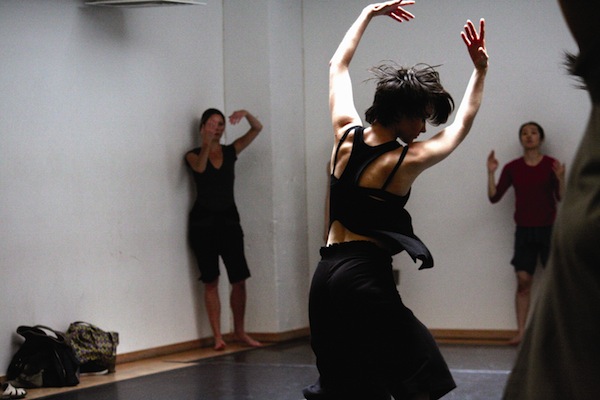
BY TERESE LOEB KREUZER |Dance New Amsterdam trains professional and aspiring professional dancers how to perform without injury and how to overcome injuries, but D.N.A. itself has taken one bruising after another. On May 28, it filed for Chapter 11 bankruptcy.
New York City’s landlord/tenant court has given the non-profit organization until the end of September to come up with a financial plan that would enable it to keep its doors open at 280 Broadway. The bankruptcy was necessitated when D.N.A.’s landlord, Fram Realty, moved to repossess the 25,000-square-foot premises where D.N.A. has classrooms, a 130-seat theater and two art galleries.
The bankruptcy filing will allow the school to maintain its class and performing schedule while it reorganizes. During this time, D.N.A. is continuing to pay rent for its space, but was $131,000 in arrears and was also saddled with interest on a debt incurred when it renovated the space it occupies in a landmarked building that dates from 1845.
Dance New Amsterdam, founded in 1984, trains dancers, rents dance rehearsal space, commissions dances and offers residencies to professional dancers. It was the first non-profit arts organization to move to Lower Manhattan after 9/11.
“The renovation put Dance New Amsterdam into crisis,” said Catherine Peila, who became executive and artistic director in 2008, two years after the renovation was finished.
“That’s when the capital campaign ended but D.N.A. wasn’t fully funded,” Peila added. “They were hoping that money from the city would come through, but it didn’t happen.”
She said there were delays in the renovation and overages. Also, she said, “We lost about a year’s worth of free rent when we could have been in business if things had gone smoothly.”
The renovation, which was supposed to cost $3.2 million, ended up costing $4.8 million plus interest.
Since then, Peila said, “There was no moment when it was easy.”
The organization was nearly evicted from its space in July 2010 because it owed more than $500,000 in rent. After three years of negotiations, the rent was reduced from $73,000 a month to $40,000 a month. Now, it is $43,000 monthly.
“I thought that once we had negotiated with our landlord for a lower rent, it would be easier,” said Peila. But then, in June 2012, Pace University, one of the group’s principal partners in the use of the space, decided to go elsewhere with most of its programming, leaving D.N.A. with a huge financial gap to fill.
Since then, the school has acquired two partners — the Joffrey Ballet School and the Tom Todoroff Conservatory, which teaches acting for film and theater — and is looking for more partners. It is also seeking funding from philanthropic organizations, which have held back their support because of the shaky financials.
“We have lowered our expenses and increased individual giving,” Peila said. She hopes this will help to attract some additional foundation support.
Peila said that it costs $2.2 million a year to run Dance New Amsterdam. Most of the revenue comes from earned income. She said the organization would need at least an additional $250,000 a year to be “comfortable.”
D.N.A. offers more than 140 classes a week and has 250 faculty members. In addition, the organization employs 18 full-time and part-time staff members in production and administration.
“We support over 650 jobs — artists, costume and lighting designers,” said Peila. “We work with over 200 different artists through our Artists Residency program. If we went away, these artists wouldn’t have jobs.”
Eight thousand people come to D.N.A. every year for professional dance training. D.N.A. doesn’t have its own dance company or teach one style of dance.
“We have a technique of training that is about injury prevention,” said Peila. “We also train artists so that they can have their own voice. We are filling a niche now because many dance companies are closing. Dancers don’t have daily classes with their dance companies. They come to D.N.A. for that…There’s nothing exactly like us.”




























